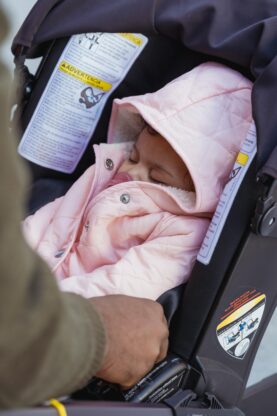Table of Contents
Screening Process
Before hiring a babysitter, it is important to thoroughly screen candidates to ensure they are qualified and responsible individuals. This may include conducting background checks, checking references, and interviewing potential candidates. It is also important to discuss any specific requirements or expectations you have for the babysitter, such as CPR certification or previous childcare experience. By taking the time to carefully vet candidates, you can feel confident that you are entrusting your children to a capable, trustworthy caregiver.
On-Demand Childcare in Your Neighborhood
Book a Sitter
Emergency Preparedness
In the event of an emergency, it is essential that your babysitter knows how to respond quickly and effectively. Make sure your babysitter is familiar with your home’s layout, emergency contact numbers, and the location of first aid supplies. It is also a good idea to provide your babysitter with a list of common emergency scenarios and how to handle them, such as what to do in case of a fire or severe weather. By arming your babysitter with the tools and knowledge they need to handle emergencies, you can rest assured that your children are in good hands.
Childproofing Measures
Childproofing your home is an important step in ensuring the safety of your children while they are in the care of a babysitter. Take the time to identify and address potential hazards, such as sharp objects, electrical outlets, or choking hazards. Make sure your babysitter is aware of any childproofing measures you have taken and knows how to enforce them while watching your children. It is also a good idea to discuss any specific safety concerns or rules you have for your children, such as not allowing them to play outside unsupervised. By creating a safe environment for your children, you can help prevent accidents and injuries while they are in the care of a babysitter.

Communication Guidelines
Effective communication is key to ensuring a positive and safe experience for both your babysitter and your children. Make sure your babysitter knows how to reach you in case of an emergency or if they have any questions or concerns. It is also important to establish clear guidelines for how you expect your babysitter to communicate with you while you are away, such as providing regular updates on your children’s activities or any issues that may arise.
Encourage open and honest communication between you and your babysitter to help foster a trusting relationship and ensure the well-being of your children.
Home Security Protocols
Ensuring the security of your home is another important aspect of keeping your children safe while in the care of a babysitter. Make sure your babysitter knows how to operate any security systems or locks in your home and understands the importance of keeping doors and windows secured at all times. It is also a good idea to create a check-in procedure for your babysitter to follow, such as contacting you upon arrival and departure or notifying you of any unexpected visitors. By establishing clear home security protocols, you can help prevent unauthorized access to your home and keep your children safe while you are away.
In conclusion, by implementing these essential safety procedures for babysitters, you can help ensure the well-being of your children while in the care of a babysitter. By screening candidates, preparing for emergencies, childproofing your home, establishing communication guidelines, and implementing home security protocols, you can create a safe and secure environment for your children when you are not present. Remember, the safety of your children should always be the top priority when hiring a babysitter, and by following these guidelines, you can have peace of mind knowing your children are in good hands.










